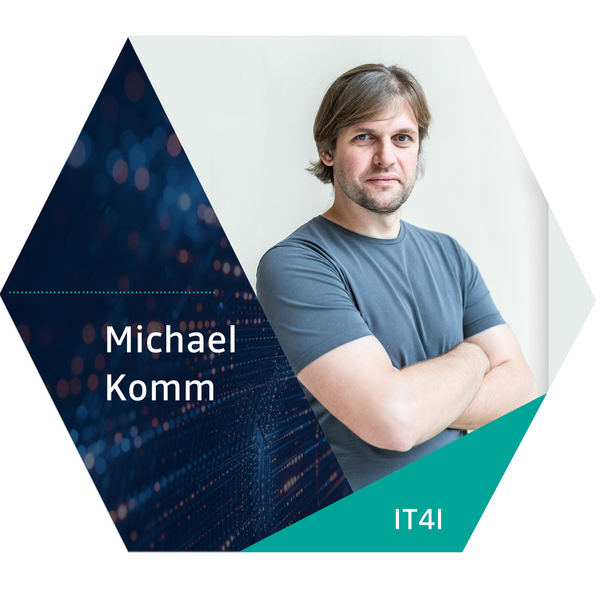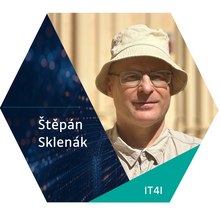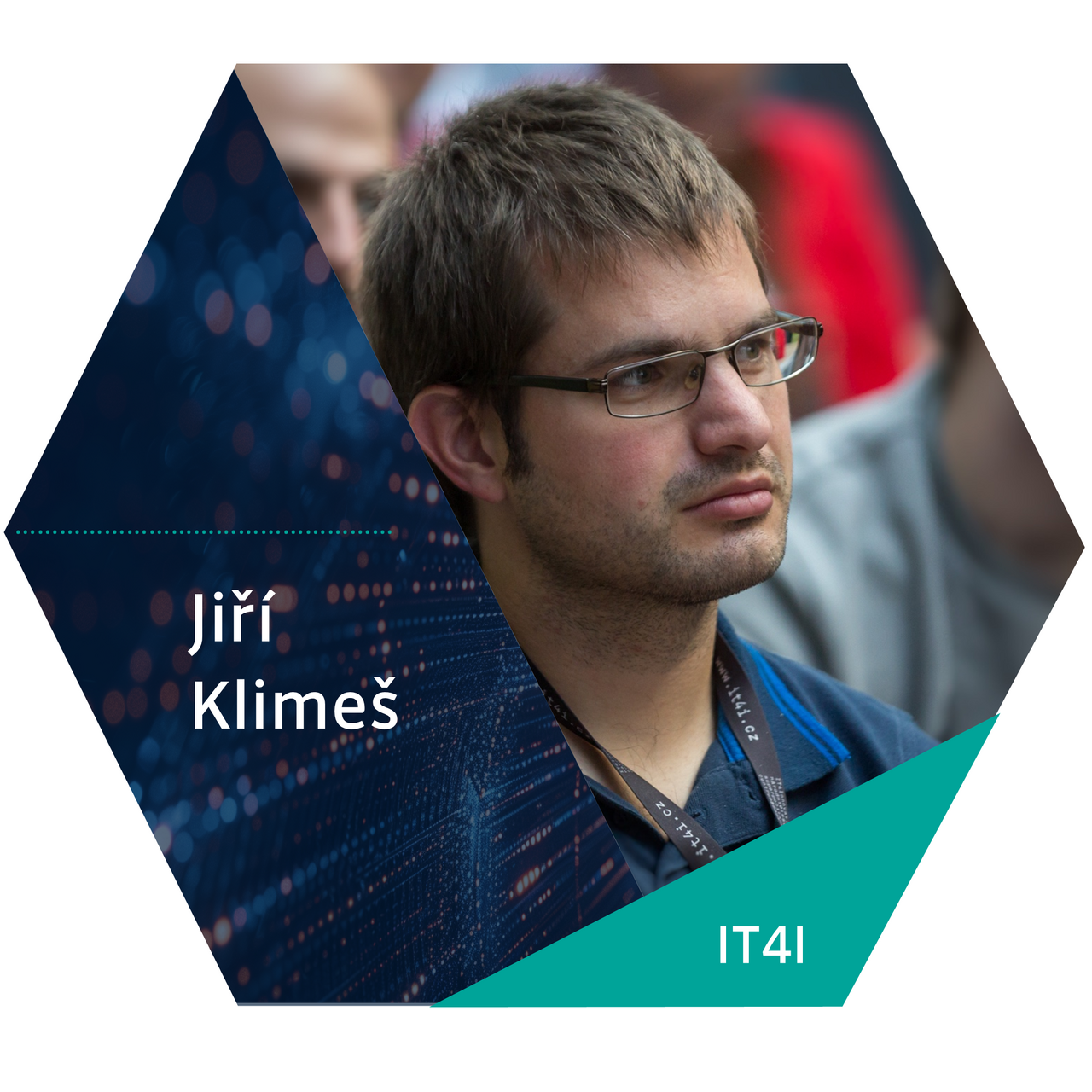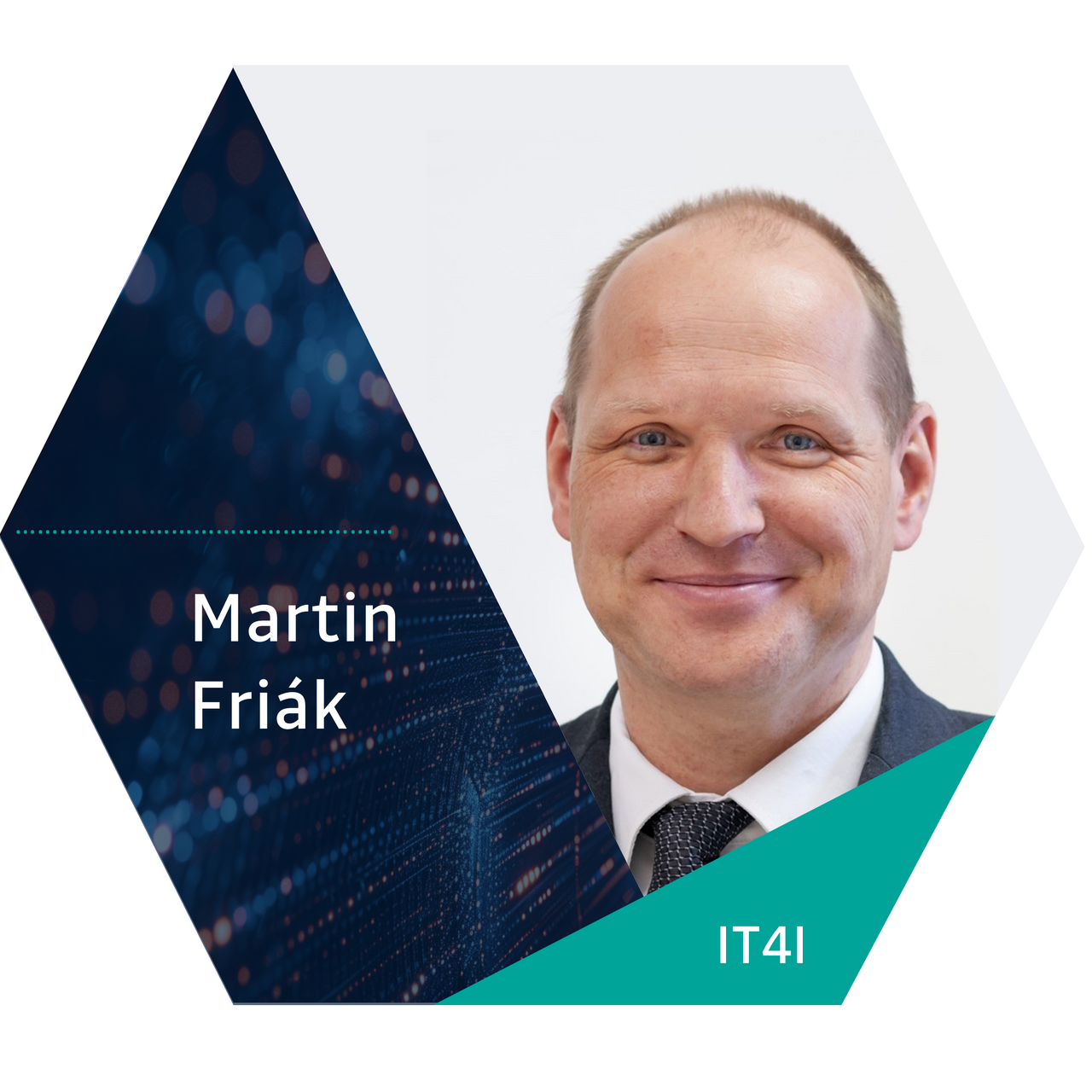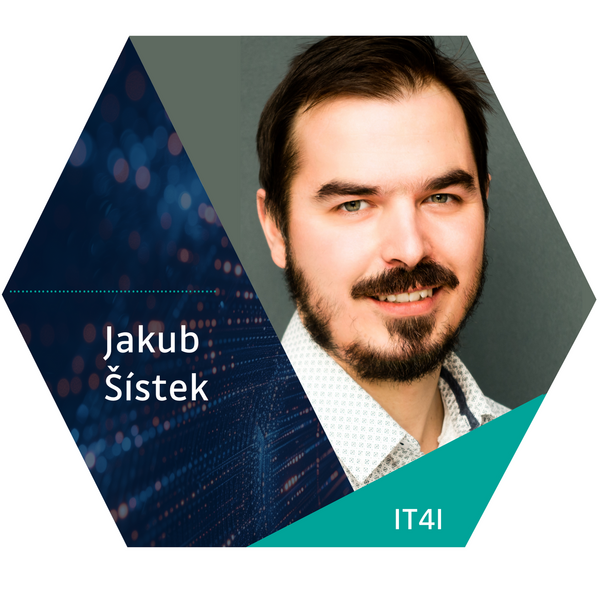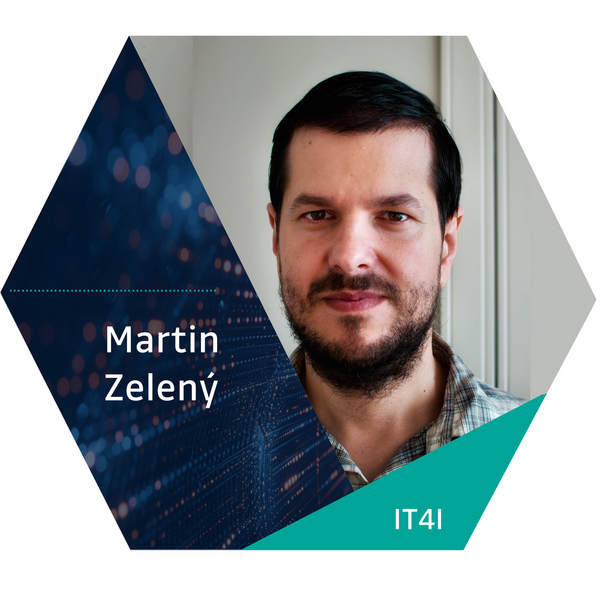Michael Komm and tokamak research
Michael Komm is the Head of the High-Temperature Plasma Physics Department at the Institute of Plasma Physics, Czech Academy of Sciences in Prague. His research focuses on nuclear fusion - specifically, how to protect the first wall of future fusion reactors from extreme heat fluxes from hot plasma. In addition to experiments on tokamaks, he is also involved in modelling the interaction of plasma with first wall components. To do this, he uses the services of a number of supercomputers, including those of IT4Innovations (IT4I).
Do you remember when and how you first encountered a supercomputer?
The first and only supercomputer I ever visited was at IT4I in Ostrava on the occasion of its commissioning. The IT4I building and the equipment of its data room left me with a very positive impression. Touring the data room in a reduced oxygen atmosphere was a bit of an adrenaline rush :)
Which supercomputers at IT4Innovations have you used?
I have been using the IT4I supercomputers for years. So far, I have used the Anselm, Salomon, and Karolina supercomputers. When it comes to foreign supercomputers, I am currently performing my computations on Italian Marconi located in Cineca and Japanese JFRS.
Which IT4Innovations supercomputer are you currently using for your research, and how important is it for your work?
I am currently using the Karolina machine for particle-in-cell simulations of fusion plasma-first wall interactions. I strive for thorough characterisation of the effect of collisions between plasma particles on the incident heat and particle fluxes and on the thermionic electron flux that can be emitted into the plasma by tungsten components when heated to temperatures near the melting point. This scenario may occur in the future, for example, on the ITER tokamak if the heat fluxes to its tungsten plates exceed a nominal rate. It is important to investigate what would happen in such a case and what the consequences would be for the lifetime of the plates and the quality of the plasma discharge.
Can you reflect on an achievement you are particularly proud of?
Last year, in collaboration with colleagues from several European fusion laboratories, I was able to experimentally demonstrate on the German ASDEX Upgrade tokamak that heat fluxes originating from plasma edge instabilities (edge-localised modes, ELMs) can be significantly reduced by injecting argon into the plasma. This approach has long been considered unfeasible in the community due to the predictions of numerical modelling. However, in plasma physics, it is still true that experiments are one step ahead of modelling. :)
A few years ago, my Swedish colleagues and I were able to augment a predictive model of thermionic flux escaping from a hot wall (e.g. tungsten) for plasmas with magnetic fields. This required a series of computationally intensive simulations, a large part of which was performed using IT4I supercomputers. I would like to thank IT4Innovations for the long-term provision of computational resources!
Štěpán Sklenák and zeolite research
RNDr. Štěpán Sklenák, PhD, DSc. has been a senior researcher at the J. Heyrovský Institute of Physical Chemistry of the Czech Academy of Sciences in Prague since 2004. After obtaining his PhD in 1995, he spent almost ten years at the Technion-Israel Institute of Technology, Yale University, University of California, and Michigan State University. In 2023, he received the Doctor of Chemical Sciences (DSc.) degree from the Czech Academy of Sciences.
His current research focuses on quantum chemical calculations of zeolites to model their structure, reactivity, catalytic activity, and properties.
In 2020, he received the most prestigious Czech scientific award - the Czech Head Invention Award, together with Dr Jiří Dědeček and Dr Edyta Tábor for the creation and description of the structure and reactivity of new, unique types of transition metal cation reaction centres in zeolite matrix and their application in the oxidation of methane to methanol.Do you remember when and how you first encountered a supercomputer?
I only started using supercomputers at IT4I in Ostrava. However, in 1999, I saw the decommissioned CRAY supercomputer on display at a conference in Boulder, CO, USA. It was apparently (it's been 25 years) at this institution, along with an exhibition about Cray's founder, Mr. Seymour Cray.
Which supercomputers at IT4Innovations have you used?
Anselm, Salomon, Karolina, and LUMI.
Which IT4Innovations supercomputer are you currently using for your research, and how important is it for your work?
I am currently using Karolina and Lumi to calculate realistic zeolite models. Using a supercomputer compared to a workstation (i.e., a server) will allow for calculations of zeolites with larger unit cells and use more complex computational models and more computationally intensive computational procedures. Calculations with realistic computational models will enable the estimation of realistic values of reaction energy and rates of chemical reactions catalysed by zeolites, adsorption energy of molecules on zeolites, NM, and vibrational spectra of zeolites and adsorbed molecules on zeolites.
Can you reflect on an achievement you are particularly proud of?
The Award of the Czech Head PROJEKT institute, namely the Invention Award, together with Dr Jiří Dědeček and Dr Edyta Tábor.
It is important to emphasise that the idea of splitting molecular oxygen (i.e., O2) arose in my computational modelling work and was only subsequently confirmed by experiments.
Jiří Klimeš and molecular crystals
Jiří Klimeš works at the Faculty of Mathematics and Physics of Charles University, where he leads a small research group at the Department of Chemical Physics and Optics. They are involved in developing accurate computational methods for calculating the properties of materials and their application. Currently, they are mainly working on molecular crystals, such as some drugs or crystals of simpler molecules, such as water or carbon dioxide.
Do you remember when and how you first encountered a supercomputer?
I gained my first experience with computing on remote computers during my studies when I used MetaCentrum services. This allows users to use systems of various institutions in the Czech Republic. At that time, these systems comprised servers with dozens of processors. The first supercomputer I worked on was HECToR in the UK. It had over ten thousand processors, and in 2007, it was the seventeenth most powerful supercomputer in the world. Back then, we were studying the behaviour of water on the surface of salt and needed to do a lot of computationally intensive calculations. Access to a supercomputer made our work very efficient and allowed us to understand the basic principles governing the behaviour of water and salt.
Which supercomputers at IT4Innovations have you used?
I've been performing computations using IT4Innovations (IT4I) supercomputers nearly since their inception, with my very first application for computational resources being submitted in 2015 when the Salomon supercomputer was launched. It was the first opportunity to apply for computational resources after returning from abroad. I was happy to take advantage of it, as a large part of our research needs to perform computationally intensive calculations. Without the existence of IT4I, the situation would have been much more difficult for me upon my return. Since then, we have been using everything available at IT4I.
Which IT4Innovations supercomputer are you currently using for your research, and how important is it for your work?
Our calculations can be divided into two types, with one being very high memory-intensive and the other being less demanding but again more numerous. With both types, we are mainly trying to understand the accuracy of the simulations and describe the strength of the bonds between molecules. The memory-intensive calculations are primarily performed on Karolina, using up to dozens of its individual servers simultaneously. This allows us to use over 10 TB of computational memory, which is about 1,000 times more than in classical computers. We also extensively use Barbora, as we have optimised one of our computer programs for its processors.
Can you reflect on an achievement you are particularly proud of?
I might mention a paper my postdoc and I published last year in which we analysed one type of error in our calculations. When we calculate the bonds between molecules, we often neglect electrons that are close to the atomic nuclei, or we simplify their description. This allows us to speed up our calculations by an order of magnitude, but it causes some errors in the calculated values. In our calculations, we either had to accept these errors or use a more accurate and computationally intensive description of these electrons. In our paper, we looked at how the error arises and developed a way to reduce it substantially. Although this is a very "technical" topic, I consider it essential as it will hopefully improve the reliability of the data published in the literature.
Martin Friák and development of new materials
Martin Friák works as a group leader at the Institute of Physics of Materials of the Czech Academy of Sciences in Brno. He studied solid-state physics at Masaryk University, both as a Master's and PhD student. Immediately after completing his PhD studies, he left for abroad and worked at two institutes of the Max Planck Society in Germany for 11 years. Since 2013 he has been based again in Brno. He is a theoretical physicist dedicated to computational materials science and the theory-guided design of novel materials. He teaches at Masaryk University and Brno University of Technology. For the past few years, the team has been performing computations using not only classical (super)computers but also quantum computers.
Do you remember when and how you first encountered a supercomputer?
The first time I had the amazing opportunity to be directly in the data room of a supercomputer was several years ago, thanks to IT4Innovations - as a participant in the regular autumn Users' Conference of IT4Innovations. It was great to experience what we usually only know from Hollywood "blockbusters" (in recent years it was, for example, the unforgettable movie The Martian, featuring a somewhat exaggerated scene directly from the supercomputer data room).
Which supercomputers at IT4Innovations have you used?
It is primarily Karolina and Barbora, which help us immensely in our work. However, as we have been loyal and satisfied users of IT4Innovations for many years, we also used Anselm and Salomon when these systems were still in operation.
Which IT4Innovations supercomputer are you currently using for your research, and how important is it for your work?
Within one of the projects supported by the Grant Agency of the Czech Republic, we are studying nanoparticles for medical applications (treatment of cancer by hyperthermia), specifically using Barbara. Karolina is helping us with simulations of quantum computers running in collaboration with the Massachusetts Institute of Technology (MIT) in the USA.
Can you reflect on an achievement you are particularly proud of?
For my research, I have been awarded a total of CZK 30 million for the period 2024-2029 as part of the Academic Award called Praemium Academiae, the highest award given by the Czech Academy of Sciences. I can't wait to see the development of hybrid computational materials science (combining classical and quantum computers with artificial intelligence tools) and its application in the design of novel materials.
Jakub Šístek and mathematical algorithms for HPC
Jakub Šístek focuses on mathematical algorithms for high-performance computing (HPC), such as parallel solvers for numerical linear algebra, scalable domain decomposition methods, and applications to problems of structural mechanics and computational fluid dynamics. He is also interested in vortex identification and visualization in fluid flows. He is currently the head of the Department of Constructive Methods of Mathematical Analysis at the Institute of Mathematics of the Czech Academy of Sciences and an assistant professor at the Department of Applied Mathematics of the Faculty of Information Technology of the Czech Technical University in Prague. Previously, he worked at universities in Denver, Cambridge, and Manchester. He received his Ph.D. in Mathematical and Physical Engineering from the Faculty of Mechanical Engineering of the Czech Technical University in 2008. He received the Ivo Babuška Prize (2009) and the Otto Wichterle Premium (2013).
Do you remember when and how you first encountered a supercomputer?
I first remotely touched a supercomputer in 2005 during my stay at the Edinburgh Parallel Computing Centre (EPCC) within the HPC Europa project. The name of the computer was HPCx, and it was an IBM eServer p5 machine. However, it was located in Daresbury Laboratory, so I cannot say I saw it. The second supercomputer I used was Frost, an IBM BlueGene machine from NCAR in Boulder during my stay in Denver in 2007. The first supercomputer I have actually seen with my own eyes was the Pleiades, a supercomputer at the NASA Ames Research Center, the fourth fastest supercomputer in 2009.
Which supercomputers at IT4Innovations have you used?
I have used the IT4I supercomputers rather continuously since the beginning of the centre. My first successful project application was during the first open call, and I benchmarked our codes and ran some of our simulations on Anselm. I have done a lot of large-scale computations on Salomon, and together with my colleagues, we are currently heavily using Karolina for our research. We have recently added support for GPUs into our main software, the BDDCML solver library, and apart from running on the accelerated nodes of Karolina, we are looking forward to running our computations on LUMI in a few months.
Which IT4Innovations supercomputer are you currently using for your research, and how important is it for your work?
Together with my colleagues, we regularly run large-scale simulations on thousands of CPUs. Consequently, we are happy users of Karolina as the main resource we rely on. Our main research revolves around the development of new scalable methods for computational mechanics of fluids and solids. These methods are based on domain decomposition techniques, mathematical algorithms tailored to parallel processing. Many of our runs are large-scale tests of the scalability of these methods, while the second class of demanding problems is time-dependent simulations of incompressible flows. The datasets generated by these simulations are used to evaluate new methods for vortex identification, which is another research direction within our team.
Can you reflect on an achievement you are particularly proud of?
As a PhD student and postdoc, I had the wonderful opportunity to get exciting experiences from universities in Denver, Cambridge, and Manchester. During these stays, I have been building on the topic I started in my PhD thesis while extending it towards mathematics, mechanical engineering, and high-performance computing. I am happy to say that most of these collaborations are still active. For example, we have recently published a paper on a scalable method for engineering simulations without the need for tedious generating of computational meshes. We have worked on the paper with collaborators from the University of Cambridge for eight years, and we demonstrate the efficiency of the method through parallel computations performed on Salomon and Karolina supercomputers. The paper is available as open access at https://doi.org/10.1016/j.cad.2024.103730.
Martin Zelený and quantum mechanical calculations of magnetic alloys with shape memory
Dr Martin Zelený works at the Institute of Materials Science and Engineering (Faculty of Mechanical Engineering, Brno University of Technology) as the Head of the Department of Structural and Phase Analysis. His research focuses on quantum-mechanical calculations and simulations of thermodynamic stability and mechanical and magnetic properties of progressive materials. Specifically, he is interested in magnetic alloys with shape memory, which exhibit spontaneous macroscopic deformation when placed in a magnetic field. He also investigates high-entropy materials, which can exhibit unique properties by assembling many chemical elements.
Do you remember the very first time you were introduced to a supercomputer?
My first encounter with a supercomputer was during the preparation of my thesis at the Faculty of Chemistry (BUT in Brno), where we had a small computer cluster. Still, the actual big supercomputer I used for my thesis was under the administration of MetaCentrum.
My first excursion to the supercomputer room was during my PhD studies when I visited the Forschungzentrum Jülich, where I visited the Jugene computer.
Which supercomputers at IT4Innovations have you used?
I have progressively used all supercomputers except NVIDIA DGX-2 in my work.
Which IT4Innovations supercomputer are you currently using for your research, and how important is it for your work?
Now, I am using Karolina and LUMI, without which quantum mechanical calculations are impossible. For these calculations, we use the VASP (Vienna Ab initio Simulation Package) program, which allows calculations of the electronic structure, interatomic interactions, and total energy of the studied materials and their crystal structure optimisation. The data thus obtained are then used to predict the macroscopic properties of these materials.
Can you tell us about an achievement that you are particularly proud of?
I consider my most significant achievement to be the study of magnetic alloys with shape memory - in particular, Ni2MnGa alloy, where, together with my colleagues from the Czech Academy of Sciences and the Finnish LUT (University of Lappeenranta), I have described the effect of doping on the stability of the low-temperature phase of martensite. I have also found the necessity of using corrections to improve the accuracy of quantum mechanical calculations for this alloy. This research started during my postdoctoral stay in Finland at Aalto University. It continued during my stay at the Faculty of Mechanical Engineering at Brno University of Technology, where it was supported by a GACR project. Another very important contribution to my professional development was a postdoctoral stay at the University of Vienna, where the VASP program was developed, and I learned how to use it directly from its authors.

